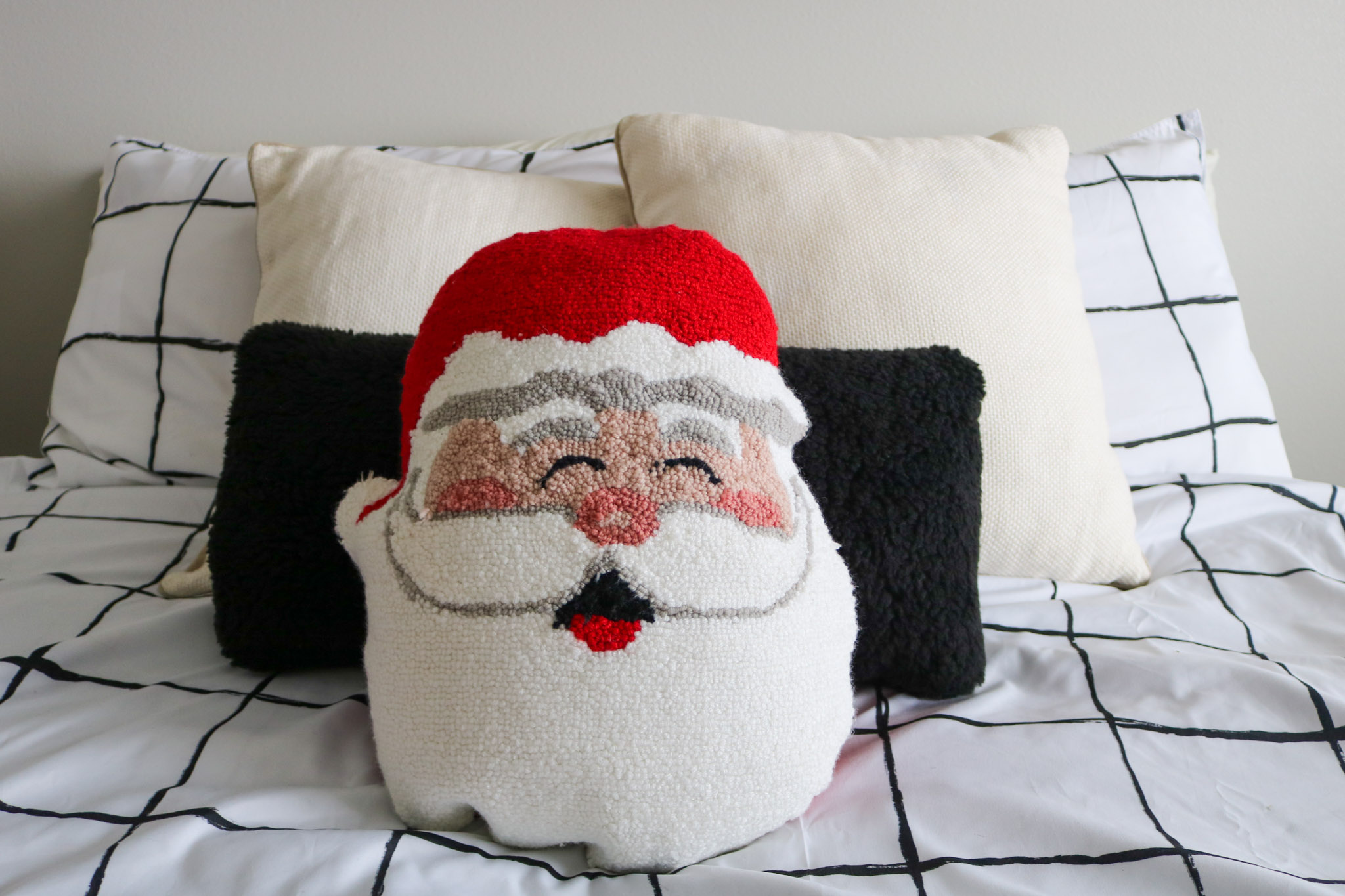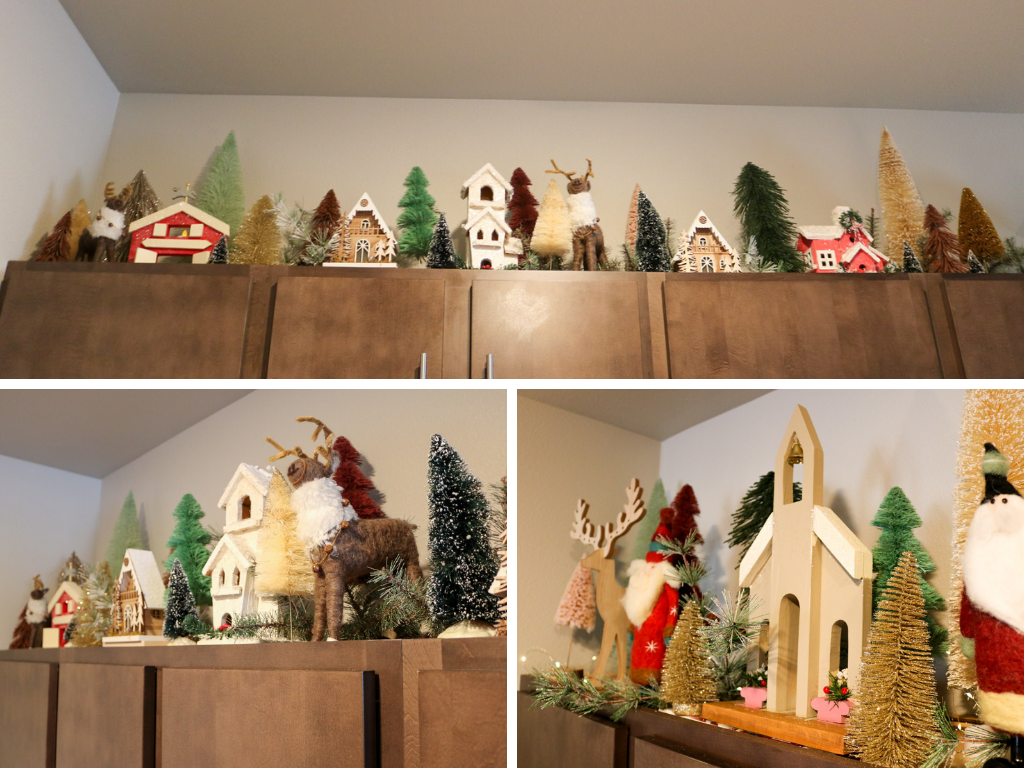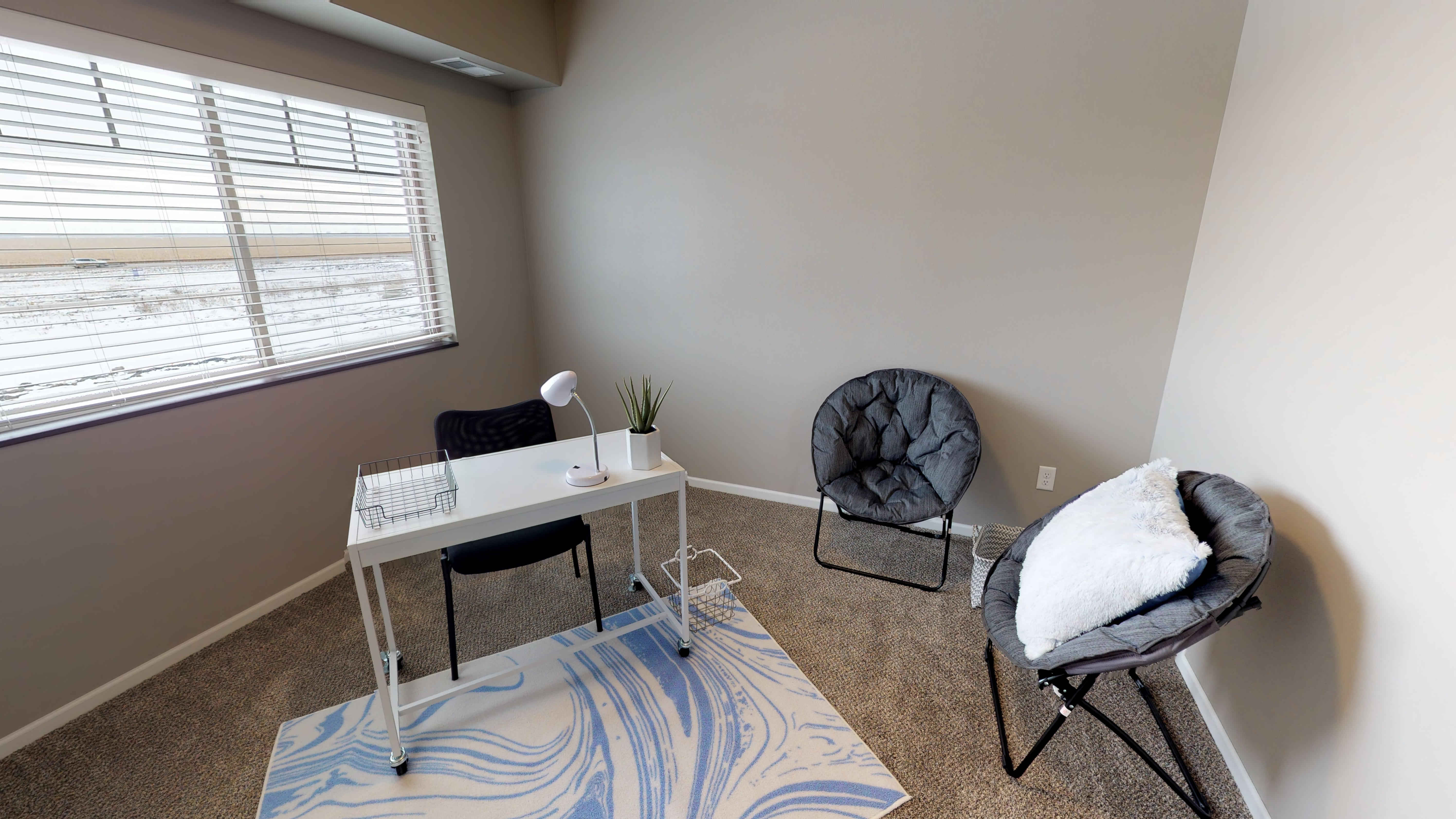See how one resident decorated their apartment for the holiday season
When it comes to decorating an apartment during the holiday season, it’s all about finding and creating small spaces. We stepped inside a resident’s apartment at The Grand off 45th to see how it was decorated this season.
Sip, Sip, Hooray!
Spread holiday cheer while you are sipping on your favorite holiday cocktail! An easy way to decorate a space such as this bar cart is by adding a touch of garland, festive drink ware, and a letter board with a fun holiday saying if you have one. You could even spice it up with twinkle lights or festive trees.

Nooks you don’t think to decorate
Bring some style to your functional pieces. Add a small decoration to your dressers, side tables, countertops, tv stands, and bookshelves. Remember to leave enough space for those practical, everyday items, so the space doesn’t start to feel cluttered. This resident mentioned that she purchased most of her smaller décor items from antique stores, local businesses, and thrift stores.
Make it cozy!
Adding textiles to your bedding such as pillows, blankets, and stuffed animals, is an easy way to create holiday spirit in your small home. You can find fun accent pillows and blankets at craft stores, local shops, and bigger home décor retailers.
Maximize the space above your cabinets
This resident did a small winter village filled with bottle brush trees, light up houses, reindeer, and garland. She used books and photo stands to help lift pieces up and bring various dimensions to the space.
Time for the tree!
Many retailers now offer slim trees that work well in smaller spaces. For this resident, it was all about the vibrant reds and pinks mixed with glitter and vintage ornaments.














